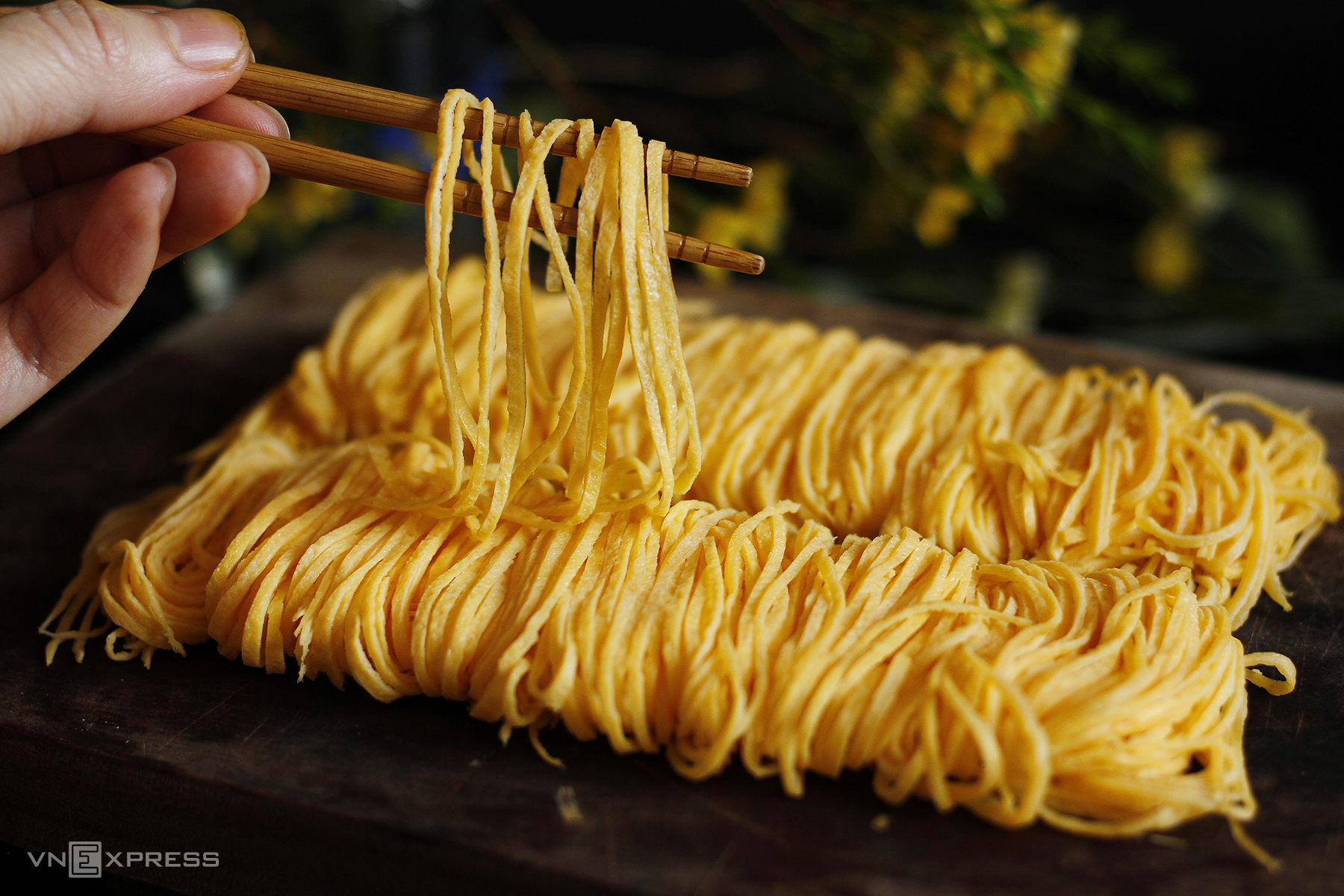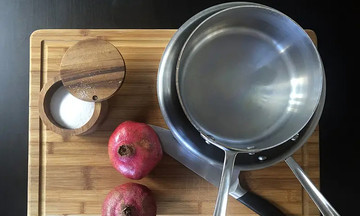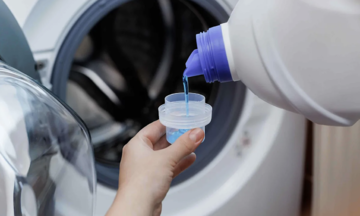Chicken eggs contain an average of 12-13% protein, with the white being rich in albumin and the yolk in lipoproteins. Whisking stretches and denatures these protein molecules, altering their structure. This allows the proteins to trap air bubbles created during the process.
Gentle circular whisking incorporates less air, resulting in evenly dispersed proteins and a smooth, cohesive mixture. Conversely, vigorous up-and-down whisking incorporates more air. The protein molecules form a network around these bubbles, creating a light and airy texture ideal for fluffy fried eggs.
This difference in protein structure makes whisking technique crucial for achieving the desired texture, depending on the dish.
 |
Gentle, circular whisking creates silky smooth fried eggs. Photo: Bui Thuy |
When to whisk gently in a circular motion:
Dishes like bun thang (a Hanoi specialty noodle soup) require a smooth, unbroken egg crepe. This is achieved by gently whisking in a circular motion to combine the yolk and white without creating foam. Some cooks even strain the mixture for extra smoothness. Similarly, for steamed cha moc (a Thai Binh meatloaf dish), lightly whisked eggs bind the ingredients while maintaining a soft texture. The egg mixture is then used as a topping.
Besides whisking technique, the cooking method is also important. Heat a pan, coat it with lard, and pour off the excess. Pour in the egg mixture, quickly tilting the pan to spread it evenly. When the edges begin to detach, gently flip the egg and cook the other side over low heat. Let it cool before slicing thinly.
Avoid high heat or overcooking, which can make the egg dry and flavorless. Japanese tamagoyaki (rolled omelet) also requires gentle, circular whisking for a uniform mixture that spreads easily and rolls into neat layers. Vigorous whisking creates air bubbles, leading to holes and an uneven texture.
 |
Multi-layered rolled omelet. Photo: Bui Thuy |
When to whisk vigorously:
While some egg dishes require smoothness, others benefit from an airy texture. Dishes like traditional egg meatloaf or eggs fried with herbs (mugwort, lolot pepper, perilla) require vigorous whisking. This incorporates more air, creating a fluffy texture when fried. Experienced cooks often whisk the eggs and chopped herbs vigorously, letting the mixture rest to develop a foamy texture. This balances the bitterness of the herbs with the richness of the eggs.
Even for simple fried eggs, many home cooks prefer a slightly airy texture for a more appealing golden-brown, fluffy result.
Additional tips for delicious fried eggs:
A dash of white wine or mirin reduces any fishy smell. Fish sauce adds chewiness, while salt creates a soft, fluffy texture. A squeeze of lemon juice or a splash of cold water helps achieve a golden color and a smooth, glossy finish, preventing shrinkage during frying.
From a scientific perspective, whisking affects both the texture and the cooking process. A less aerated mixture (circular whisking) cooks quickly and evenly, with a smooth surface. A more aerated mixture (vigorous whisking) increases volume, but the air bubbles slow down heat transfer, resulting in a crispy exterior and a soft interior. This explains the difference between a thin omelet and a fluffy frittata.
Nutritionally, both methods retain the egg's essential nutrients, including easily digestible protein and B vitamins. However, fluffy eggs absorb more oil during frying due to their porous structure. For those limiting oil intake, a thinly cooked omelet made with gently whisked eggs is a healthier option.
Bui Thuy












